Out of the box, the Atlas Air is a disappointing affair. It is an open-back wireless gaming headset with great emphasis on its lightness, which explains its sober appearance. It weighs just 301 grams and, compared to some competitors in this price range, it certainly feels less like an expensive jewel in the hands and more like a blunt weapon.
Don’t expect fancy swivel cups with hinges that will probably wear out in a few years: this thing feels like you can pull it out like a snap strap. People with huge heads, you’re lucky. Pushers, shovers, known klutches: this might be something for you.
This utilitarian approach extends to the interface. A large volume wheel is attached to the left cup, so you can never accidentally disconnect your headset or switch to Bluetooth mode while adjusting the volume. The detachable microphone is a matter of pulling back to mute, and I think few would dispute the brutal simplicity of this approach.
There’s a power button and two buttons that switch between Bluetooth and wireless modes, and an LED that indicates power or low battery. The battery has an advertised life of 50 hours and I’ve only charged it twice in the three weeks I’ve used it.
Atlas Air Specifications
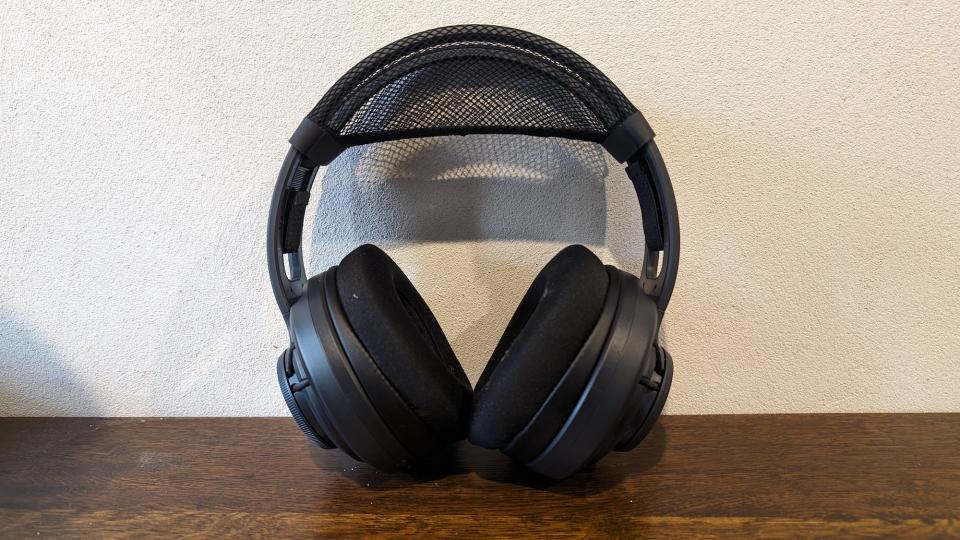
Link: 2.4 GHz wireless (Type-C dongle), Bluetooth 5.2, USB Type-C cable, 3.5mm analog cable
Type: Over the ear, open back
Frequency response: 20 – 40,000 Hz
Drivers: 40mm with Waves 3D audio
Microphone: Unidirectional 16-bit 32 kHz high bandwidth
Weight: 301 grams
Price: $150 / £160 / AU$299
The overall impression is of a headset that promises to work. It’s aesthetically understated and the polyurethane shell doesn’t feel expensive in the hand. The headband is made of flexible mesh that some may consider cheap until its benefits shine through. This strap is adjustable with Velcro and is probably the main factor contributing to both the Atlas Air’s lightness and its superior comfort during long gaming sessions.
It’s difficult to objectively convey “comfort” when it comes to headphones because a lot depends on the size of your skull and the habits you have when using them, but as a man with a large skull who spends more than four hours In sessions back to back, I don’t think I’ve ever felt so unencumbered.
I mean, look how far these looks extend. There is 300 mm between the cushions here:
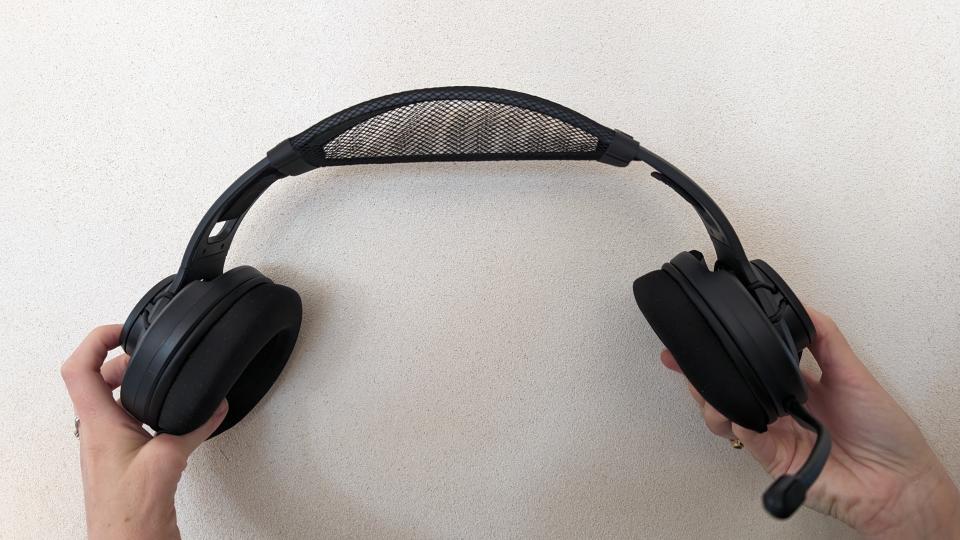

The memory foam-covered cups ‘float’, which means that they are not technically connected to the band at all, but are firmly secured via a total of 12 elastic bands. As you can probably imagine, this adds to the stretchiness of the unit as a whole. Attaching the two main components of a headset together in this way may seem a bit questionable in theory. While it remains to be seen how the Atlas Air will fare in the long run, in my opinion it feels much more secure than cups that rotate out of the belt, or are held on via typically thin metal hinges. I’ve had headphones worth more than double the Atlas Air break in six months based on these mechanisms: Perhaps some outside-the-box thinking would be welcome.
During the three weeks I used this thing for review, both at my desk gaming and also use it as Bluetooth headphones while walking and commuting: the feather-light comfort of the Atlas Air is the quality that stood out to me. It has other strengths, but boy, does this thing seem to dematerialize once you place it on your skull.
But that’s just one important aspect of Atlas Air’s pitch; the other is its audiophile chops. It’s no wonder that half of the contenders on our list of the best audiophile headphones for gaming are open. Please note that the list also applies to ‘headphones’, not gaming headsets. It’s a relatively niche question and its drawbacks are often too severe to warrant inclusion in a device designed specifically for gaming.
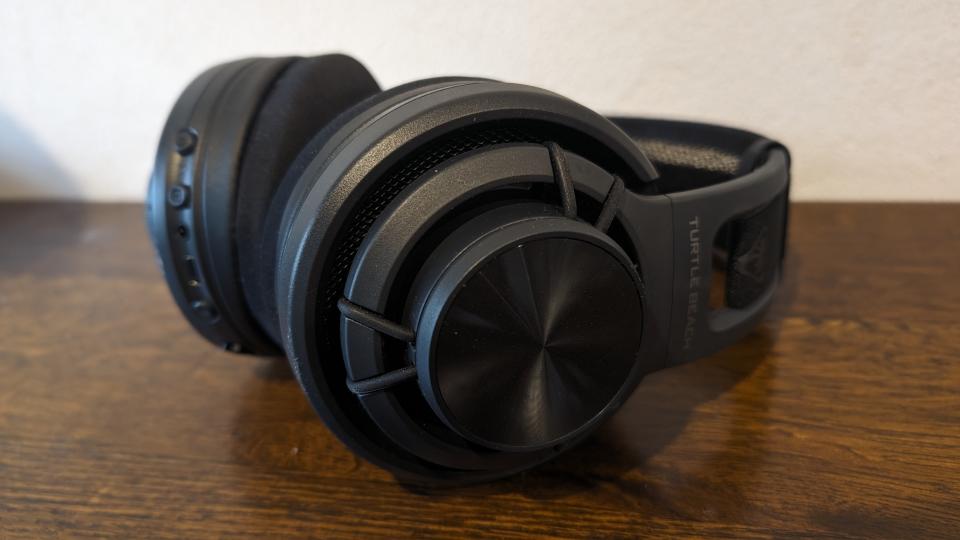

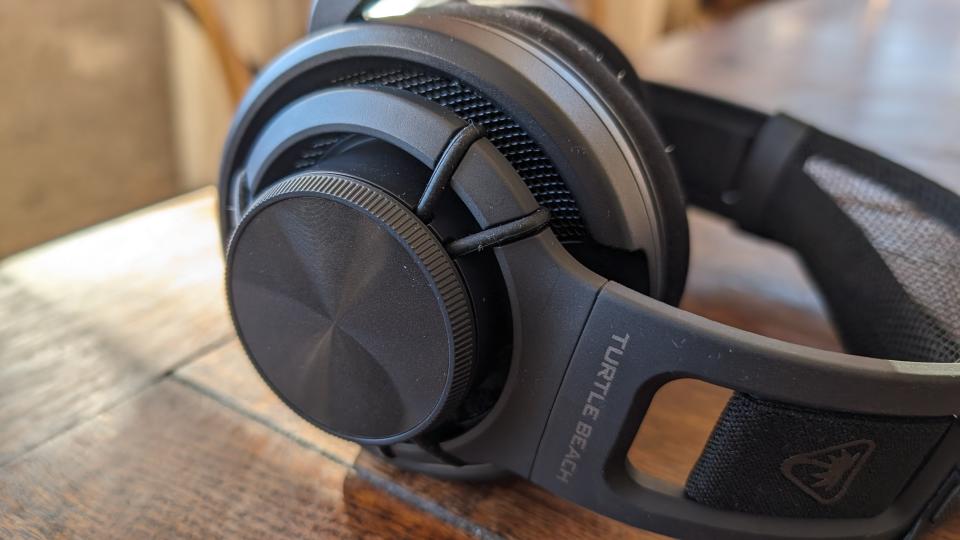

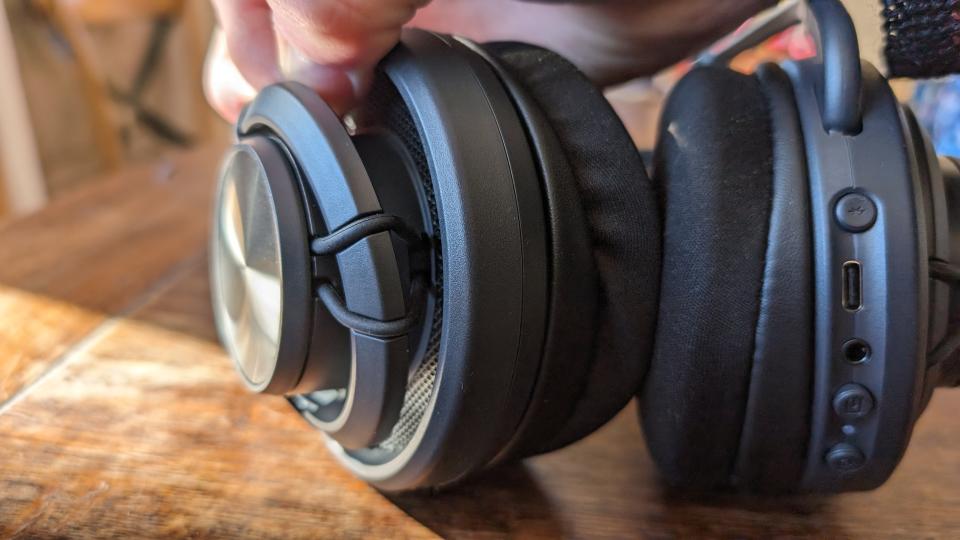

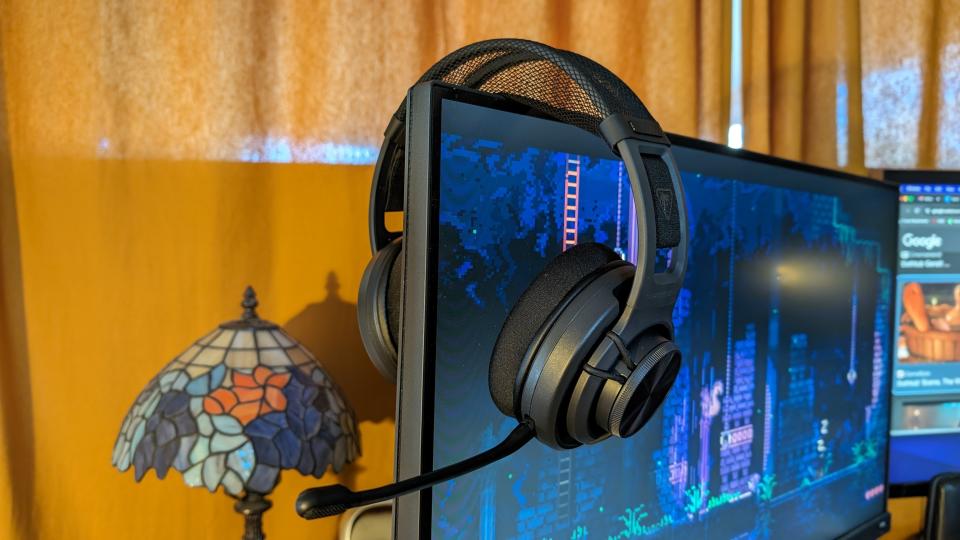

Open-back headphones aim for more accurate sound reproduction by eliminating the back of the speaker enclosure, eliminating the erroneous sounds that can arise from an enclosed, reverberant speaker. Sure, the sound is more authentic and true to the source – almost on par with monitoring headphones – but there’s the problem of sound leakage, which is unavoidable under this design principle, undermining one of the main reasons we use headsets.
Buy as…
✅ You want accurate ‘audiophile’ sound: The Atlas Air sounds brilliant thanks to its open design, with a huge focus on staying true to the sonic source material.
✅ You like comfort: While it’s not the lightest headset on the market, it feels lighter thanks to an unorthodox design approach.
Don’t buy if…
❌ You game in a loud environment: Open-back headsets have the disadvantage of allowing ambient noise to pass through to a greater extent than normal non-ANC headsets.
❌ You game in a very quiet environment: For the same reason, if you’re concerned about sound leakage, an open back is not a good choice.
But the difference is not insignificant, and it doesn’t take an audiophile to notice it (although it might take an audiophile to worry about it). Playing Animal Well on my HyperX Cloud III – a headset I use a lot because it’s always on my desk – I was impressed by the dank, subterranean atmosphere: the labyrinthine world exuded an almost overwhelmingly menacing reverb. Switching to Atlas Air actually changed the atmosphere of the game: the ooze became more detailed. Faraway sounds and shouts, otherwise obscured by lower frequencies, were faintly visible in the distance. It wasn’t so much a soup of foreboding mood, but more of a subtlety-laden environment that I was sonically transported to. Actually, I was in the source.
If closed-back headphones work, that’s basically the big difference you can expect. But you should also expect that, as a byproduct of the open design, sound not only leaks out, but also seeps in. At low volumes this can be an issue, although I particularly experienced percolation while using the Atlas Air for a purpose for which it was not expressly designed: walking down a busy street while listening to ambient music. Given the Bluetooth functionality here (it also has a 2.4GHz wireless dongle, which is a much better option for real gaming, and a 3.5mm jack for the Luddites), it’s tempting to consider the Atlas Air as perhaps a wireless headset for on the go in addition to a gaming version. But this certainly won’t satisfy mid-range active noise cancellation (ANC) headphones for that use case: ANC and open-back are essentially mutually exclusive concepts.
This is the first wireless open-back headset “designed for PC,” according to Turtle Beach. It’s not the first open-back gaming headset, of course (I reviewed this Audio-Technica model a few years ago), but the combination of wireless and open-back is seemingly new here. As someone who generally prefers an open back and can deal with its inherent disadvantages, this combination is extremely welcome. That leaves one final consideration: what’s the microphone like?
As you can hear in the example above, it’s completely clear and, reflecting the qualities of the speakers it’s connected to, it doesn’t suffer from any unintended lower frequencies. In other words, it doesn’t add bass to my voice like some microphones do, and in practice it delivers in all the details thanks to its 100 to 16,000 Hz frequency response.
What then is the verdict? As someone who prefers the detail and “truth” of open-back headphones, I love this marriage of that principle with wireless functionality and a great microphone. The fact that this appeal to my niche interests has a bizarrely airy and flexible form factor is a bonus. The Atlas Air is a niche market and you probably shouldn’t buy an open-back headset without understanding the drawbacks. For example, if your gaming PC is in the same room as the family TV, this is probably not for you. But if you’ve been waiting for a wireless open-back for gaming, well: this is it. And it’s very well done.